Ancient Chinese inventions have changed the course of history, from combat weapons such as gunpowder to groundbreaking units such as the compass. Ancient Chinese philosophers made great strides in science, technology, mathematics, and astronomy, independent of Greek philosophers and other cultures. Comets, solar eclipses and supernovae were first observed and documented in China. Chess, the cannon, the silk, the umbrella, acupuncture, the porcelain, the seismometer, the dragon and even the toothbrush were all popular because of the Silk Road growth.
The oldest innovations were the abacus, the "shadow bell," and the early flying planes and Kongming lanterns. However, the 'four great inventions' - paper, gunpowder, the compass and printing - were the most important technological advances, first recognized in medieval Europe. The Tang Dynasty (618 - 906 AD) was a period of enormous inventions. Until the Qing Dynasty, there was a lot of trade between Western and Chinese discoveries.
List of Ancient Chinese Inventions
Ancient China was a world leader in several aspects of scientific research. Apart from the four famous innovations in papermaking, printing, gunpowder and compass, ancient China provided countless additional achievements to the globe; how many do you know?
The following is a list of ancient Chinese inventions, some of which may surprise you:
Te
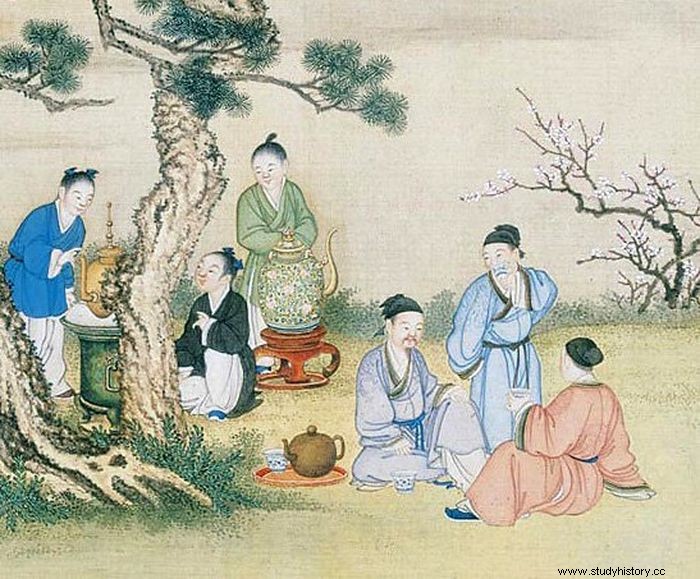
Tea is so important in China that even the myth of silk includes a cup. Silk was allegedly found when a cocoon from a mulberry bush fell into a cup of imperial tea, according to legend. This story can be compared to how Emperor Shen Nung, 2737 BC, discovered tea by drinking a cup of water with leaves from an overhanging Camellia bush. During the Tang Dynasty, which lasted from 618 to 907 AD, tea became extremely popular. Everyone in the community appreciated it.
The tea plant is endemic to the Chinese province of Yunnan. Lin Cang in China is home to the world's oldest living tea plant. This plant is very old, with an estimated age of 3,200 years. For centuries, tea was a secret commodity among the Chinese. However, it would continue to be popular all over the world, inspiring the British Empire to go to war over imbalances in the tea trade.
Ancient Chinese paper inventions
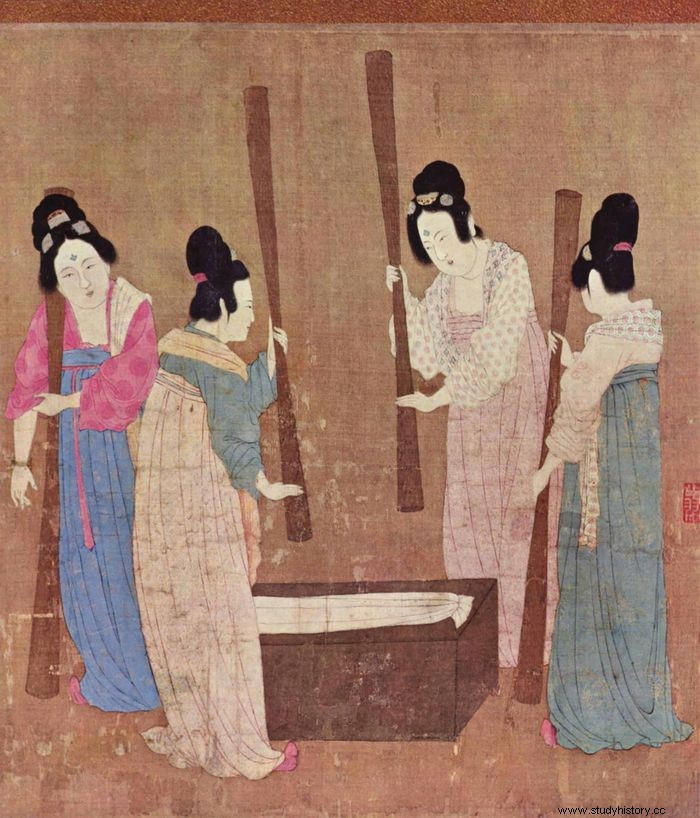
Before developing paper, people wrote about other materials such as wood, stone and bone. The Egyptians discovered papyrus, a form of reed that they used to write on by overlapping thin strips soaked in water, around 2200 BCE. Papyrus is the source of the word "paper".
One of the most important inventions of all time is paper. According to archives, paper recognition took place in China as early as 105 AD. However, it was not widely accepted until a eunuch, Cai Lun, significantly improved the papermaking process. He also pushed for broader adoption in China.
The technology eventually made its way to Europe via the well-known Silk Road. As a result, the development had massive implications for information registration and dissemination and significantly affected future technological advances.
However, according to a new archaeological study, the development of paper took place 200 years earlier and was in use by the ancient Chinese military.
Ancient Chinese Compass Inventions
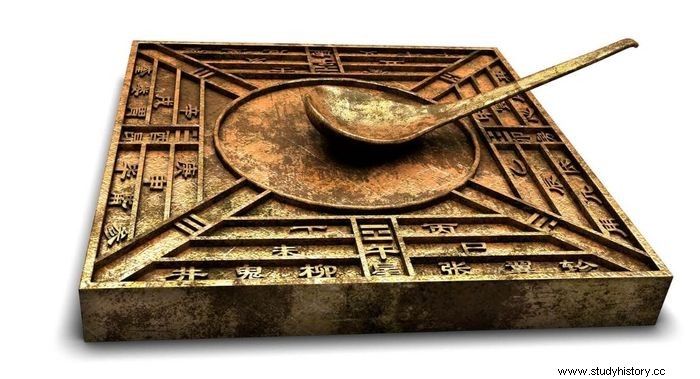
The Chinese belief was that the south was the cardinal direction, and the first compass was made with a lodestone pointing south. Sørpekeren was the name. A solder stone is a form of magnetite mineral that aligns with the earth's magnetic field. A hung lodestone can rotate freely and point towards the magnetic poles, as discovered by the ancient Chinese. It was primarily used for geomancy and storytelling during the Han period.
In the 11th century, the Chinese accidentally discovered that lodestone could indicate a direction for travel during the Song Dynasty. So the Chinese began using the compass for navigation during the 9th and 11th centuries.
Ancient Chinese inventions of the mobile printing press
The discovery of the first example of woodblock printing took place in a Tang tomb in Xi'an in 1974. It is a Buddhist song in Sanskrit on a hemp paper between 650 and 670 AD. Wood block printing became popular and widespread during the Tang Dynasty, despite being expensive and time consuming.
Bi Sheng, a man from the Song Dynasty, was the first to design movable type prints. He sculpted individual characters into clay and fired them to solidify them. These fragments were later attached to an iron plate to print one side, then loosened and reformed for another. This method spread rapidly throughout Europe in the years leading up to the Renaissance, and it was eventually used globally.
Silk
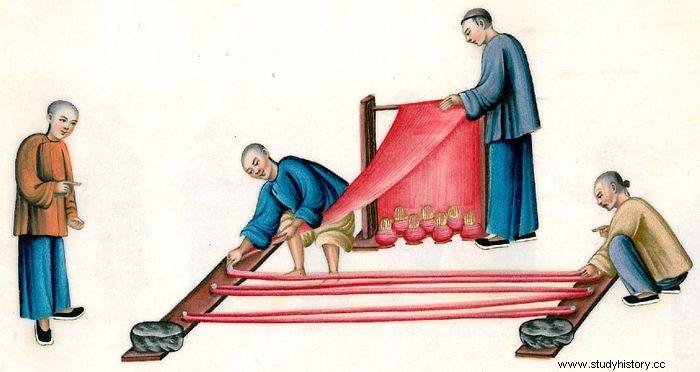
Silk was first created in the fourth millennium BCE, during the Neolithic period. It had a wide use in various industries, including writing, fishing, musical instruments and clothing. Emperors and high-class societies were the first to use silk, but it eventually expanded to the rest of the population. Silk became more than a commodity during the Han period (202 BC – 220 AD). A deserving Chinese or official received silk as a prize.
Silk has become an important part of China's economy. Around 300 AD. Japan and the Middle East began to grow silk, and the Crusades introduced the idea of silk production to Western Europe.
Ancient Chinese Inventions of Gunpowder
The evolution of gunpowder, sometimes known as 'black powder', was carried out by Chinese Taoist alchemists in 1000 BCE. Then, in 142 AD, Wei Boyang, popularly known as "the father of alchemy", defined it as a material that could "fly and dance" fiercely.
Ironically, alchemists continued to research it to create a chemical that would provide eternal life. The aim of the experiments was to change the body by heating 10% sulfur and 75% nitrates.
The use of black powder took place in pyrotechnics and signaling in the 10s. It gradually found its way west, where it was often used as a weapon. It was also used as an explosive to break up coal and rock reserves until the discovery of dynamite in the early twentieth century.
Ancient Chinese inventions of the crossbow
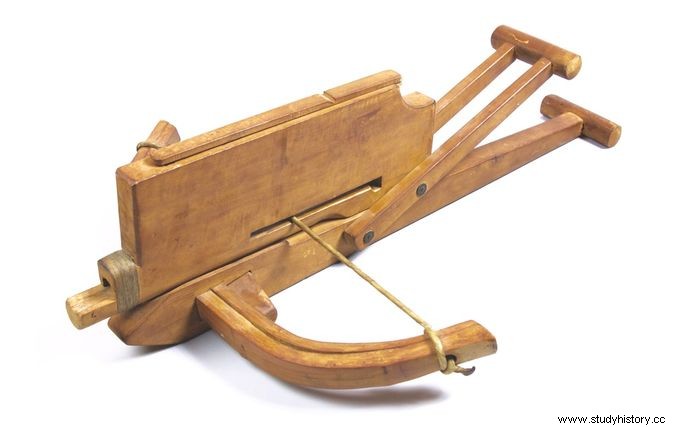
The crossbow has its connection to medieval battlefields. However, they were a Chinese creation dating back over 2.5 millennia. According to historical documents, the crossbow was widely used in China before 500 BC. Other evidence suggests that the technology dates back to about 700 BCE
Other archaeological finds indicate that the invention of the crossbow was in 2000 BC. Whatever the case may be, the development will have a huge long-term impact on combat. Metal triggers and bolts, usually formed of bronze, are the most common early evidence. In China, repeated crossbows were popular in the 4th century BCE
Ancient Chinese porcelain inventions
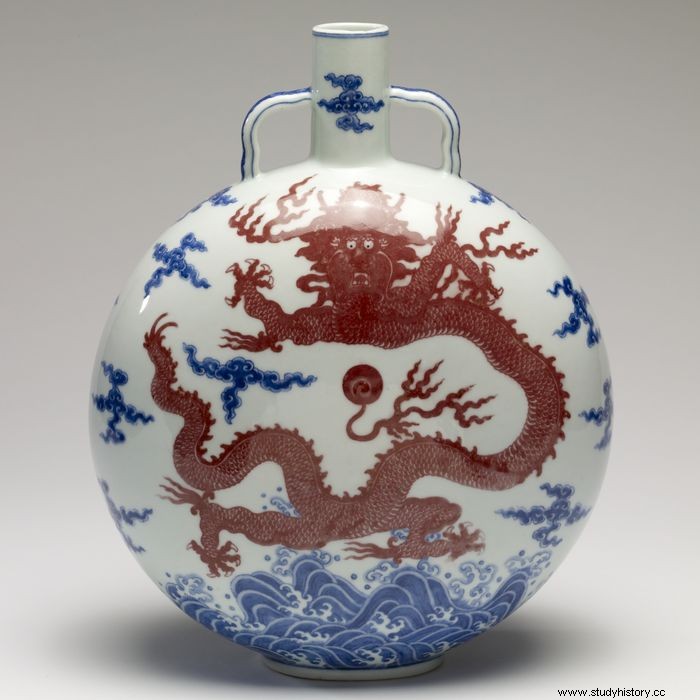
After the Chinese's possibly life-saving seismographic breakthrough comes the aesthetically attractive discovery of porcelain, a kind of kaolin clay pottery. During the Han dynasty, the serendipitic discovery of how to produce this ceramic material took place. White porcelain in its full form appeared later, most likely during the T'ang Dynasty. However, porcelain now has its association with bathrooms more than crockery. It is also used in dentistry to replace natural dental crowns.
Seismographs
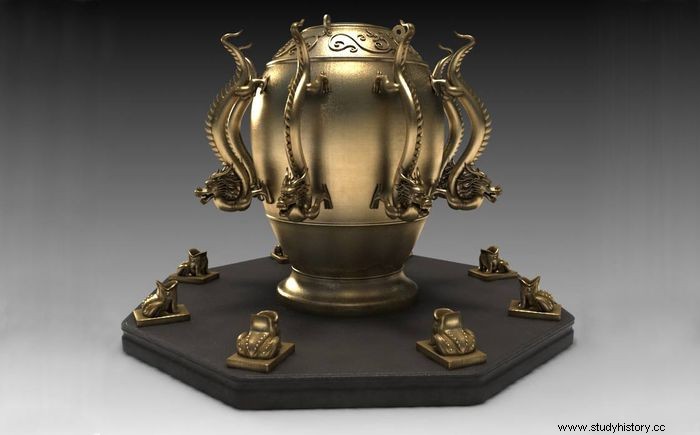
Centuries of historical earthquake histories show that China's earthquake problems were and continue to be significant. High mountains fall away when the ground shakes, and the distortion of large areas of land occurs. Sima Qian, the famous great historian of ancient China, wrote in his annals in 91 BCE about how a massive earthquake in 780 BCE changed the flow of three rivers. More than 600 earthquakes have been recorded in Taiping Yulan, a 10th century manuscript.
Zhang Heng (78-139 AD), a Chinese physicist, mathematician and inventor, invented the seismograph, which is still used to measure earthquakes today. A large 'fine cast bronze' jar with a lid served as a seismograph. Eight dragon heads are evenly distributed around the tub, with bronze balls in the jaws. Eight bronze toads with wide-open jaws surround the vessel's base. If pushed or shaken, the ball would fall into the mouth of the corresponding toad.
The discovery of alcohol
Recent archaeological evidence suggests that the Chinese are also responsible for the invention of alcohol. For example, in China's Henan region, 9,000-year-old pottery fragments were discovered that contained signs of alcohol content. If this is accurate, it will put it over 1,000 years ahead of the Arabian Peninsula, considered the first brewers.
The discovery of alcoholic beverages and fermentation has also taken place outside China in Georgia (about 6,000 BCE), ancient Egypt (3150 BCE) and Babylon (3,000 BCE). However, it is unclear whether these findings occurred independently.
In 1970, large quantities of wine and beverage jars were discovered in Pingshan County, Hebei Province. Two of them had a wheat-based drink from around 2,280 BCE. This drink may well be the oldest spirit ever discovered.
Paper Money
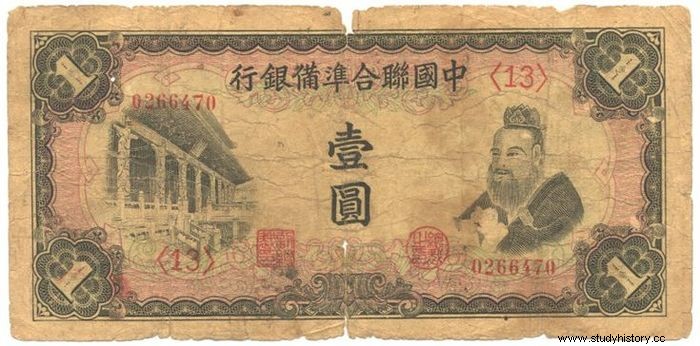
Because the banknote, or paper money, was initially so light that it could blow out of your fingers, it was therefore named "flying money". Because copper coins were heavy and unwieldy to handle during significant commercial transactions, it only happened in China during the Tang Dynasty to establish them as deposit receipts. The government immediately embraced paper money to send tax payments. In the 10s, China used real paper money that could be exchanged for metal coins. On the other hand, Sweden was the first country to issue Western money in 1661.
Ancient Chinese Inventions of Kites
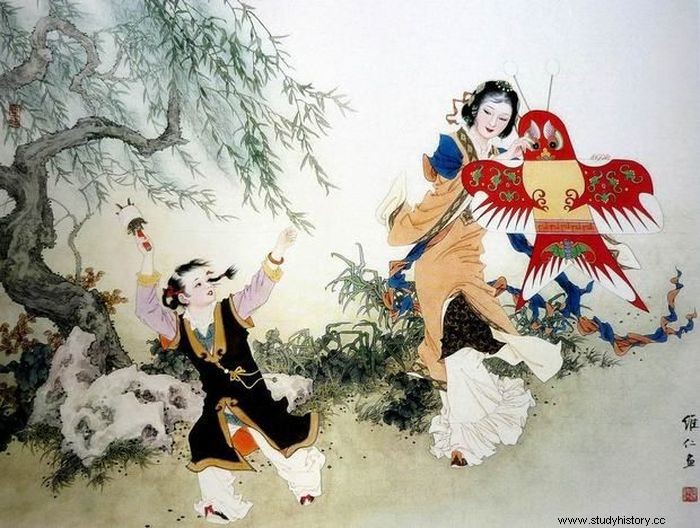
The Chinese were ahead of the rest of the world in silk production, and they used it to build kites by combining high tensile silk with a robust and light bamboo frame. The reporting of the first dragon took place in ancient China by the Chinese philosophers Lu Ban and Mozi in the fifth century BCE. Paper carriers were used to send messages for rescue operations before 549 AD. The Chinese used kites to test the wind, calculate distance and communicate militarily in the Middle Ages.
Casting of iron and steel
The Chinese used stone arrowheads for fishing and hunting throughout the Paleolithic period. However, conflicts between different groups began to emerge during the Neolithic period, and the Chinese began to turn their agricultural and fishing equipment into deadly weapons. The development of bronze smelting took place through the Shang and Zhou dynasties to produce various weapons and agricultural implements.
During the Zhou Dynasty (1050 BC – 256 BCE), the Iron Age began in ancient China, when the use of iron was to make weapons, agriculture, and household items. However, private iron production was illegal during the Han Dynasty, and the state began to control the iron smelting business.
Iron and steel weapons were made by the Chinese using various processes. China's iron and steel industry grew rapidly due to its creative processes. They developed several casting methods to produce pig iron, cast iron, hardeners and steel, and put them ahead of other civilizations.
Ancient Chinese Inventions of Wheel Barrow
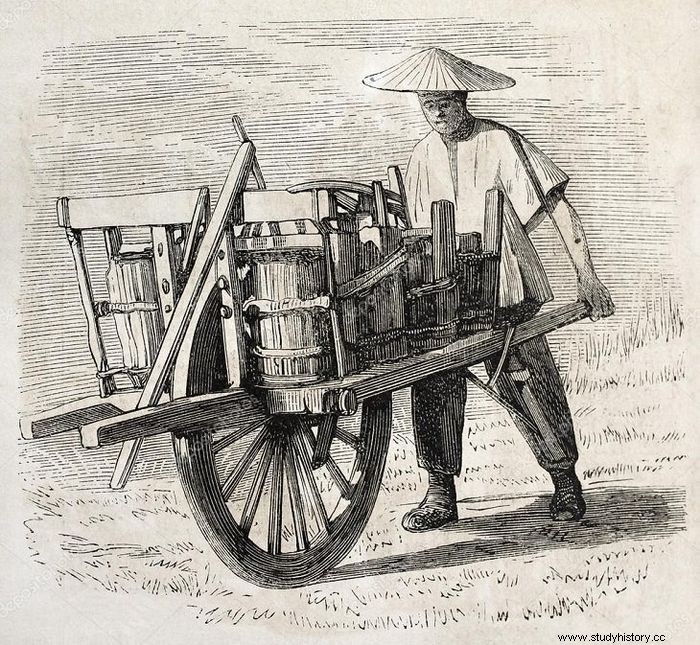
Wheelbarrows were in use in ancient China during the Han period. We can see this evidence in the House tomb paintings and reliefs of brick tombs. On the other hand, the wheelbarrow is assigned to Shu Han Prime Minister Zhuge Liang (181–234 AD) somewhere between 197 and 234 AD. Liang invented the wheelbarrow to transport military weapons and injured and dead men from the battlefield.
The two most common variants were front-wheel wheelbarrows and centrally located wheelbarrows. Because the weight of the wheelbarrow was well distributed between the wheels and the pullers, it did not take much work to draw it. This layout made it easy to use, and builders, warriors, traders, and farmers mostly used wheelbarrows.
Abacus
Around 500 BC, the invention of the abacus was made by the Chinese. However, it is also worth noting that other historical documents suggest that the Sumerians invented another type of abacus much earlier, around 2,700 BCE.
Later Roman literature, Egyptian hieroglyphs and Greek objects from around 300 BCE also mention Abaci. Whatever the case, in the 14th century the technique had been refined and remains virtually unmodified today.
The device's simplicity and usability will make it a long-term investment. However, many societies around the world still use the abacus. In addition, many claim that they are better than today's digital calculators for simple calculations.
Ancient Chinese Inventions of Umbrellas
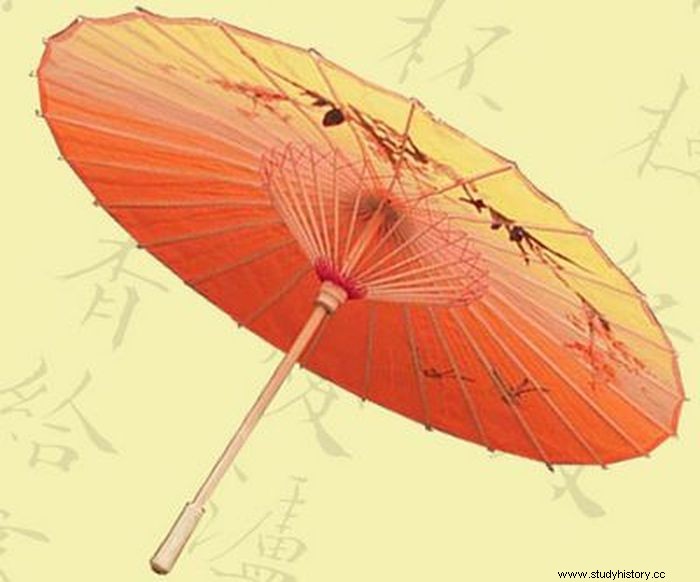
The first mention of a collapsible umbrella, according to historical documents, dates from about 21 AD. The creation of this umbrella most likely took place for a ceremonial four-wheeled cart at that time.
In the 1st century, an authentic specimen was discovered in Wang Guang's tomb. There may even be evidence that they can be dated 2,400 years ago. According to legend, a Chinese carpenter and inventor named Lu Ban invented the umbrella after seeing children use lotus leaves as a rain cover.
More convincing evidence suggests that the invention of umbrellas took place during the Zhou Dynasty in the 6th century. Complex bronze hinges with locking sides and bolts are said to have been used to hold umbrellas and umbrellas.
Varnishing

Varnishes, especially varnishes, date back to the Shang Dynasty, perhaps as early as Neolithic times. Varnish creates a long-lasting, hard, protective, decorative, insect and water-repellent surface. In addition, lacquerware is light because it is made by laying small layers of material on top of each other and on a core. The use of colors such as zinobes and iron oxide occurred regularly. Finally, the dried resin or juice of the lacquer tree, extracted by a procedure similar to mapping, is the product.
Acupuncture
According to archaeological evidence, the practice of acupuncture has existed in ancient China since the Paleolithic period. The discovery of stone knives, bamboo or bone needles and other materials used as therapeutic tools took place in China. Also during the reign of Huang Di, the Yellow Emperor (2697–2597 BCE), the revolution in acupuncture took place. No. Jing, the first book on Chinese medicine, had a composition between 305 BCE and 204 BCE. Huang Di and his physicist Qi Bo had a conversation about the full range of Chinese medical skills.
Decimal system
An inscription from the thirteenth century BC shows how the Chinese used the decimal system, with '547 days' inscribed as 'Five hundred plus four decades plus seven days.' Instead of using an alphabet, the Chinese used characters. It's tempting to keep writing in terms like eleven when using a Western alphabet with more than nine letters. However, ten is ten-blank with Chinese characters, while eleven is ten-one; thus, zero was left blank. It was easier than coming up with a new character for each number, and having a decimal system from the start helped significantly in mathematical progress. A Spanish text from 976 CE contains the first proof of decimals in Europe.
Ancient Chinese Inventions of Rockets
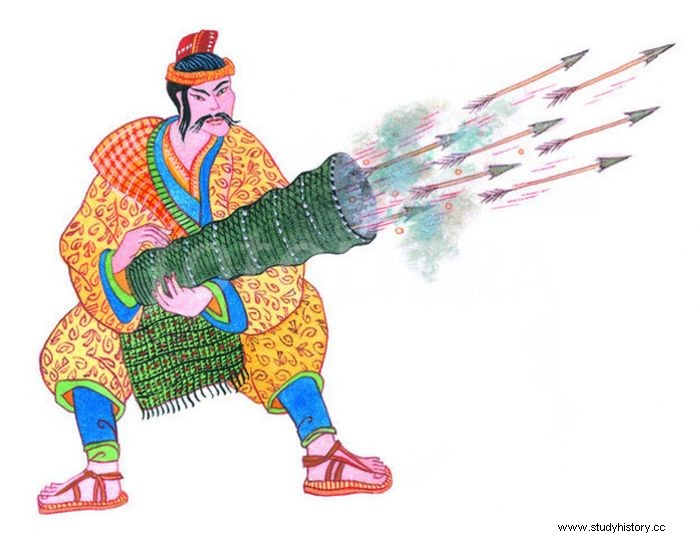
The invention of rockets was made in China by ancient Chinese innovators who used counterforce produced by burning gunpowder. According to Chinese legend, the Wei state used torches attached to arrows to defend Chencang against the invading armies of the Shu state in 228 AD. Later, the Song Dynasty (960-1279 AD) developed powder rockets. A powder-filled paper tube was attached to an arrow that a bow could throw. In China, old rockets and modified versions were often used in military and recreational operations.
The conclusion
Ancient Chinese inventions transformed many businesses that we take for granted today. For example, there would be no books without paper; Travel will be difficult without a compass and no paper money without printing. In the Middle Ages, the Chinese developed many things. Without these ancient and medieval Chinese technologies, the world would be different.
